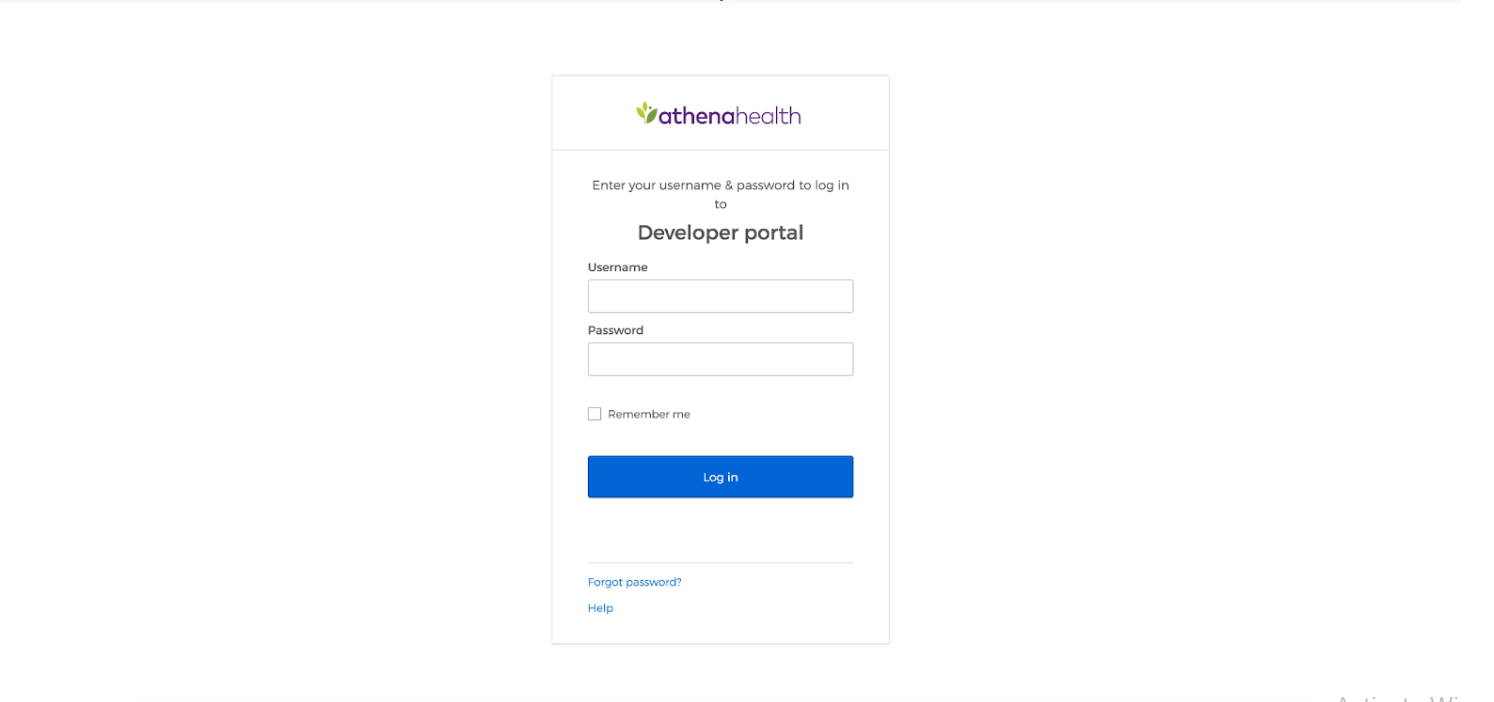Pre-requisite
Getting Athena Sandbox Access
Things required before starting with Athena EHR integration
Follow the steps mentioned in this document to generate the Client ID & Secret. This Client ID & Secret will be used in your EHR integration to pull & push information.
Athena Jargons
Tablespace/ Context ID/ Practice ID
- athenaNet is a single instance, multi-tenant platform. A “tablespace” represents a single practice’s athenaNet tables.
Provider Groups
- An Athena term, a “Provider Group” is a concept that creates financial walls around a group of providers within a single practice (under a single practice ID or tablespace).
Departments
A Department is any place of service where a provider in a practice sees patients.
- Patient Departments:
- site of registration, such as a medical office (typically, the provider office where the patient’s chart resides).
- Service Departments:
- site where services are rendered, such as the emergency room. Most departments are service departments.
- Dummy Departments:
- virtual departments used for tracking provider schedules. For example, an "On Call" department displays the call schedule for all providers in a practice.
Encounter
- An encounter is a unique episode of care (patient visit) in athenaNet.
5-Stage Encounter Workflow
- Each of the stages in the workflow are performed by specific practice end-users.
- Check-in
- Intake
- Exam
- Signoff
- Checkout
Chart Groups (Enterprise/Hospital)
- The Chart Groups feature allows an athena Enterprise practice to share clinical charts across provider groups (whose financial data are separate by default).
Subscription Events
Events are generally for getting the delta information changes that happen on the Athena platform. ref
Process
- Subscribe to a data feed with the POST/{feedtype}/subscription API.
- Retrieve changed data using the GET/{feedtype}/changed API.
- Partial Subscriptions will be displayed via the GET/{feedtype}/subscription call with a status of “Partial”.
Important Notes:
- Features that Athena DOES NOT support
- Preview/Sandbox Rate Limits
- 15/sec & 50k/day
- Production Rate Limites
- 100/sec & 500k/day
- Sandbox URLs
- Production URLs
- User Types
- Administrator
- Provider
- Patient
Steps to Get Access to Athena Sandbox Environment
Step 1: Register to Athena Portal
- Register on https://developer.api.athena.io/ams-portal/
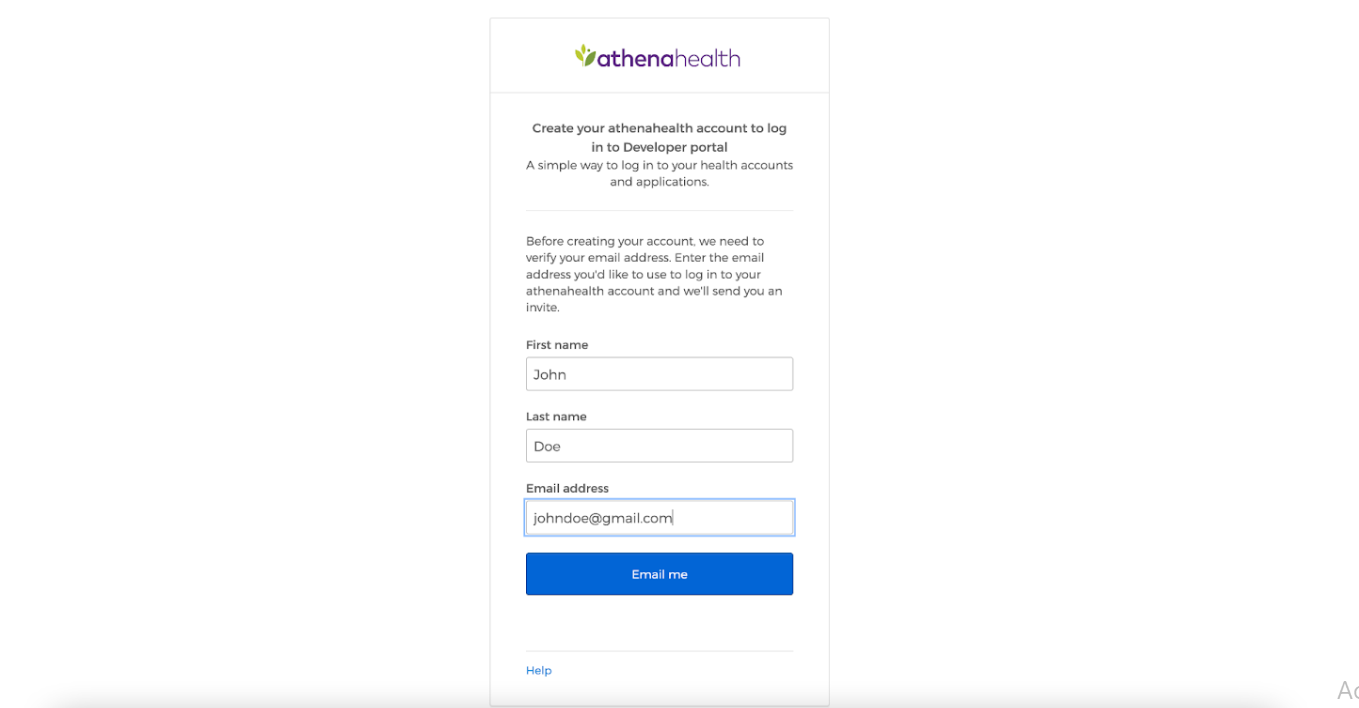
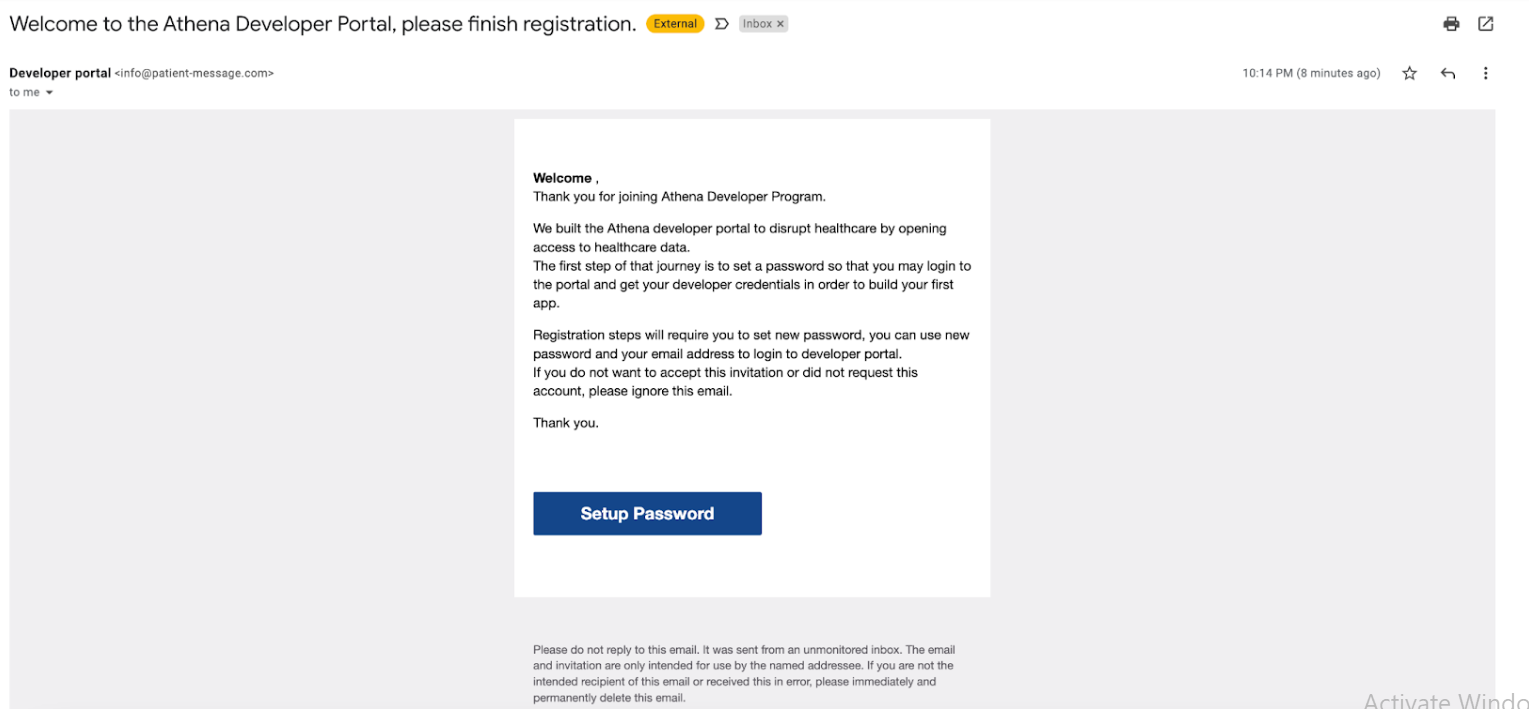
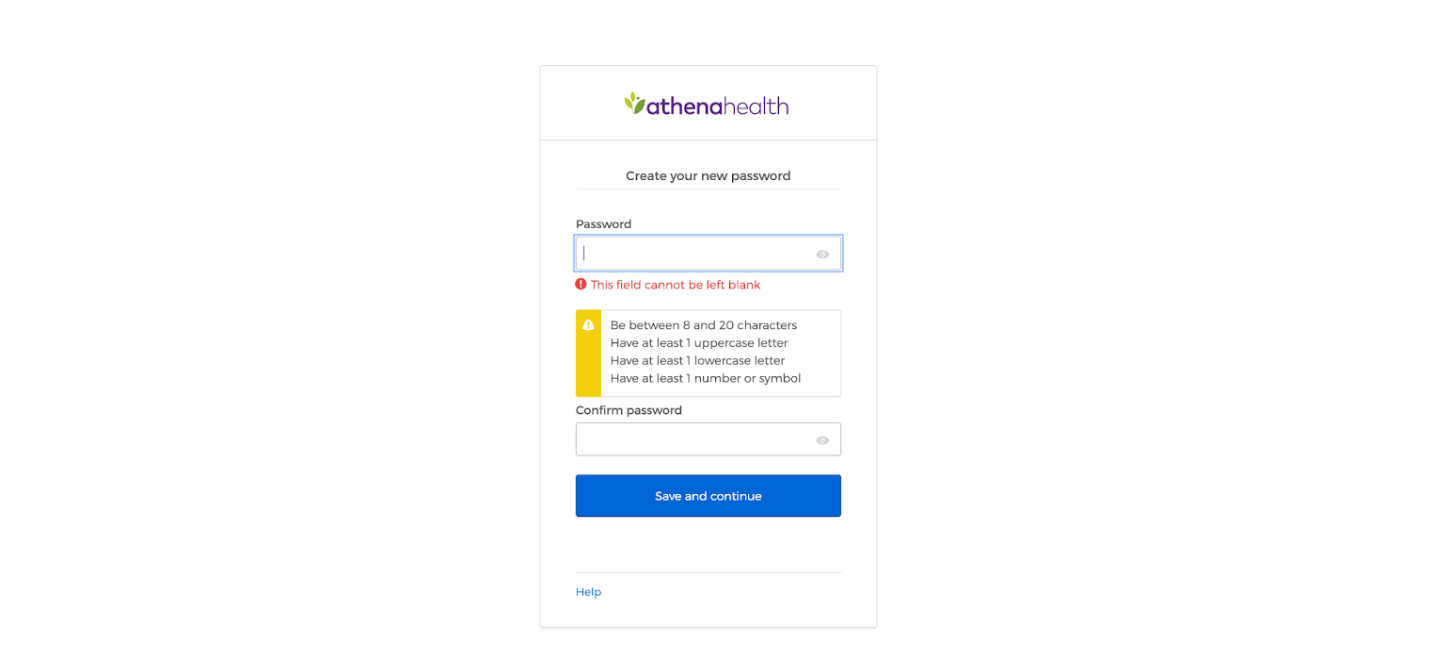

Step 2: Log in to the Portal
Step 3: Create App
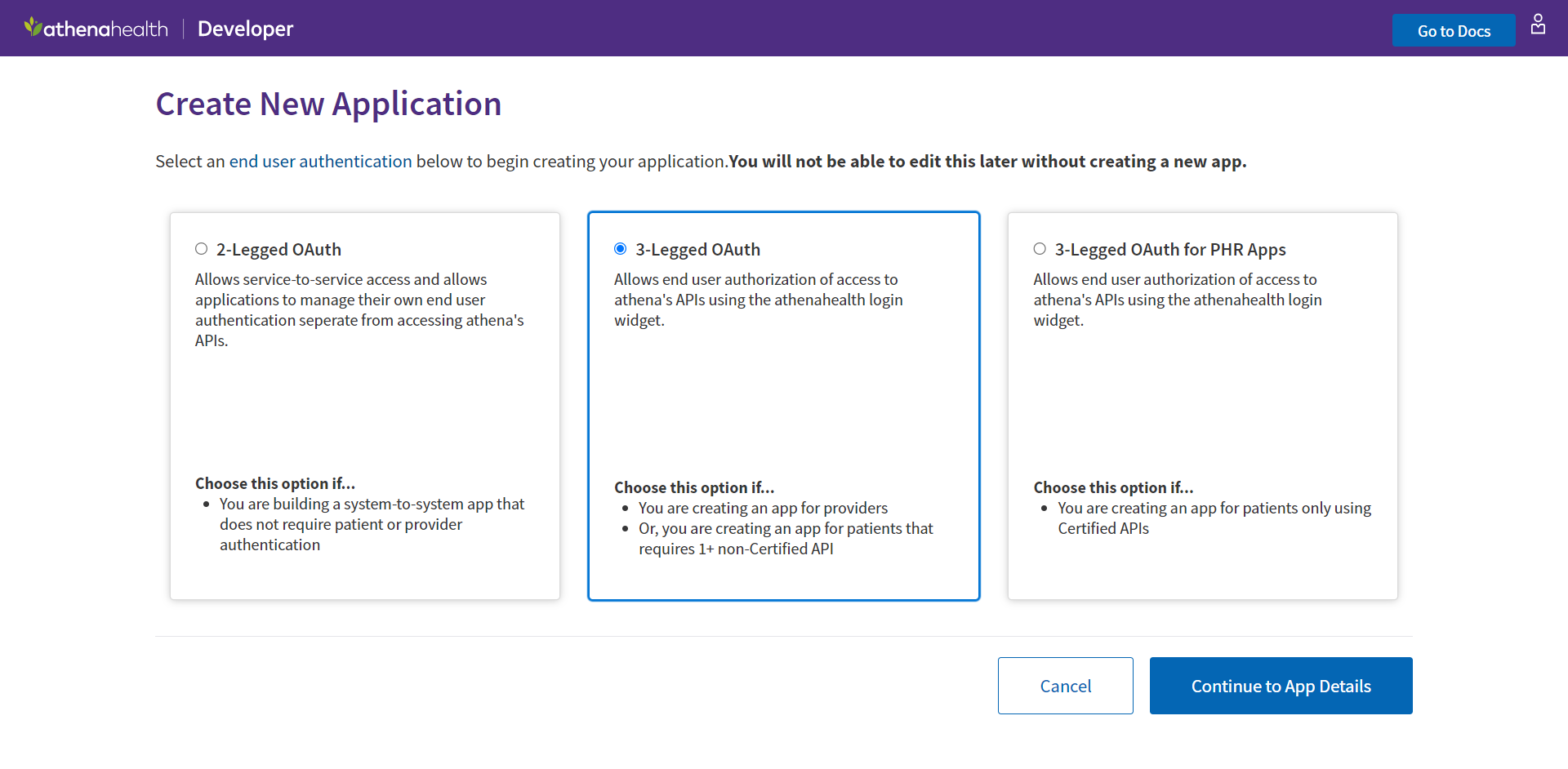 The below diagram shows the JWK authentication type. But for now, we will go with Secret Authentication.
The below diagram shows the JWK authentication type. But for now, we will go with Secret Authentication.
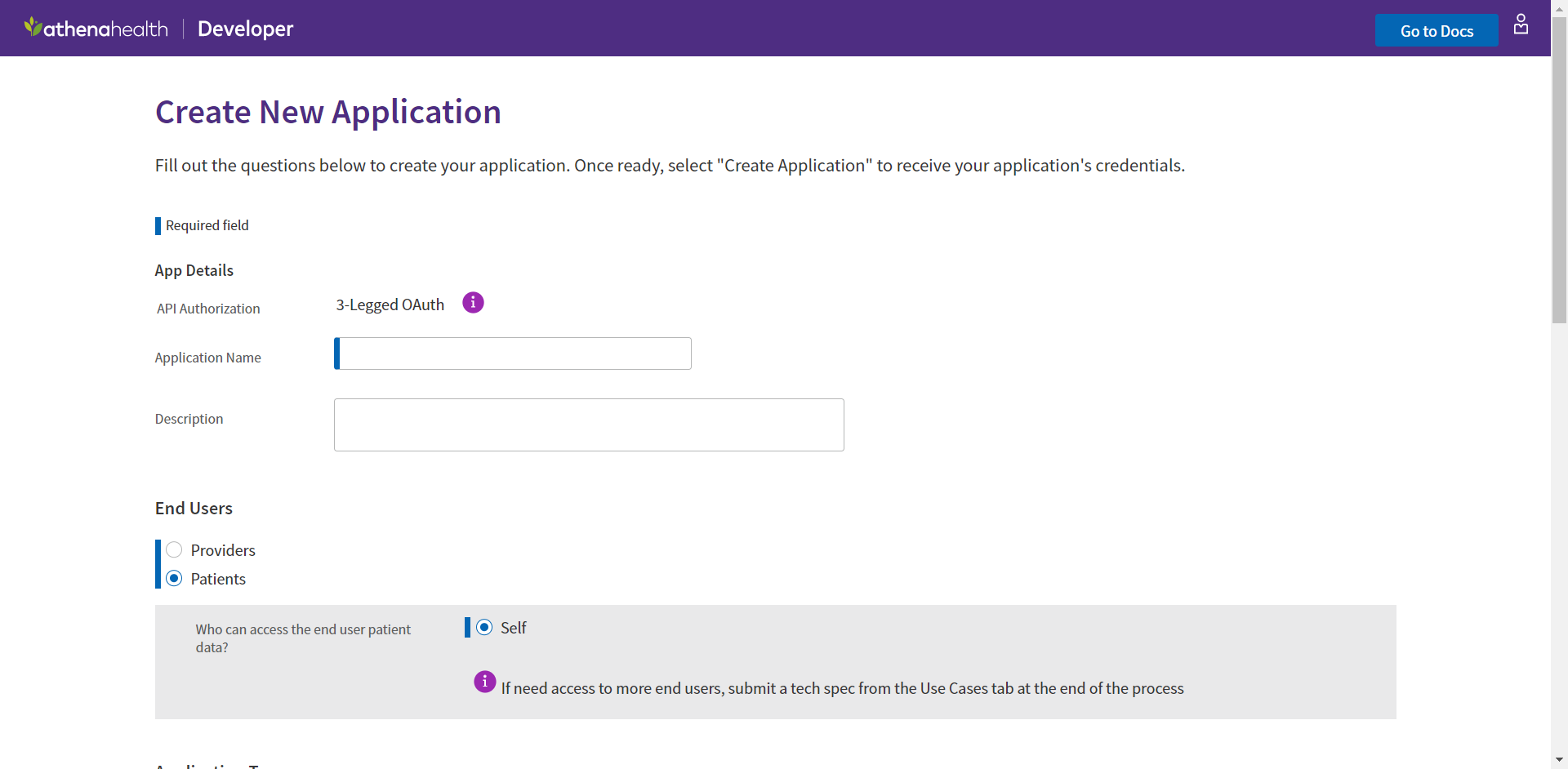
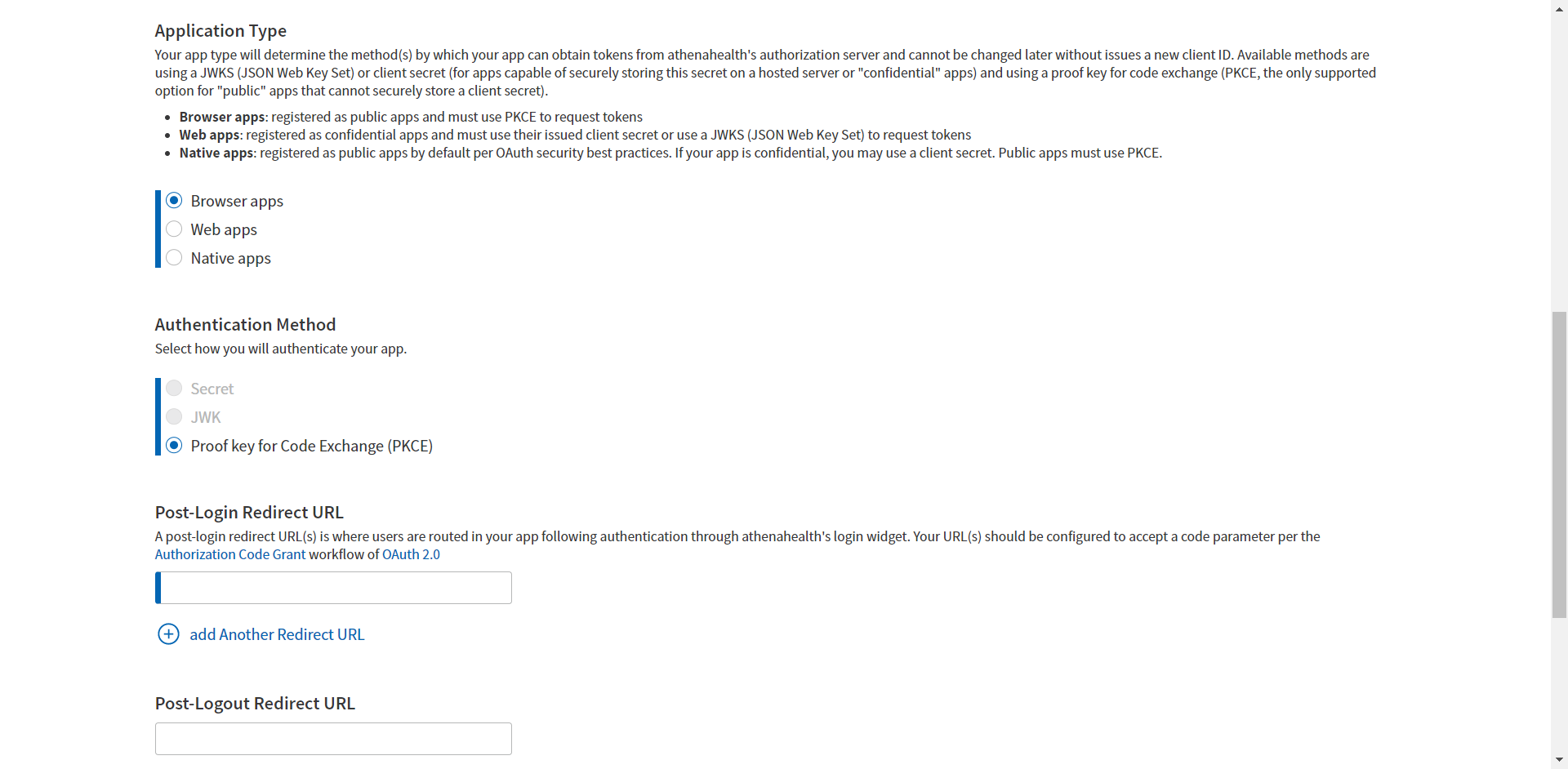
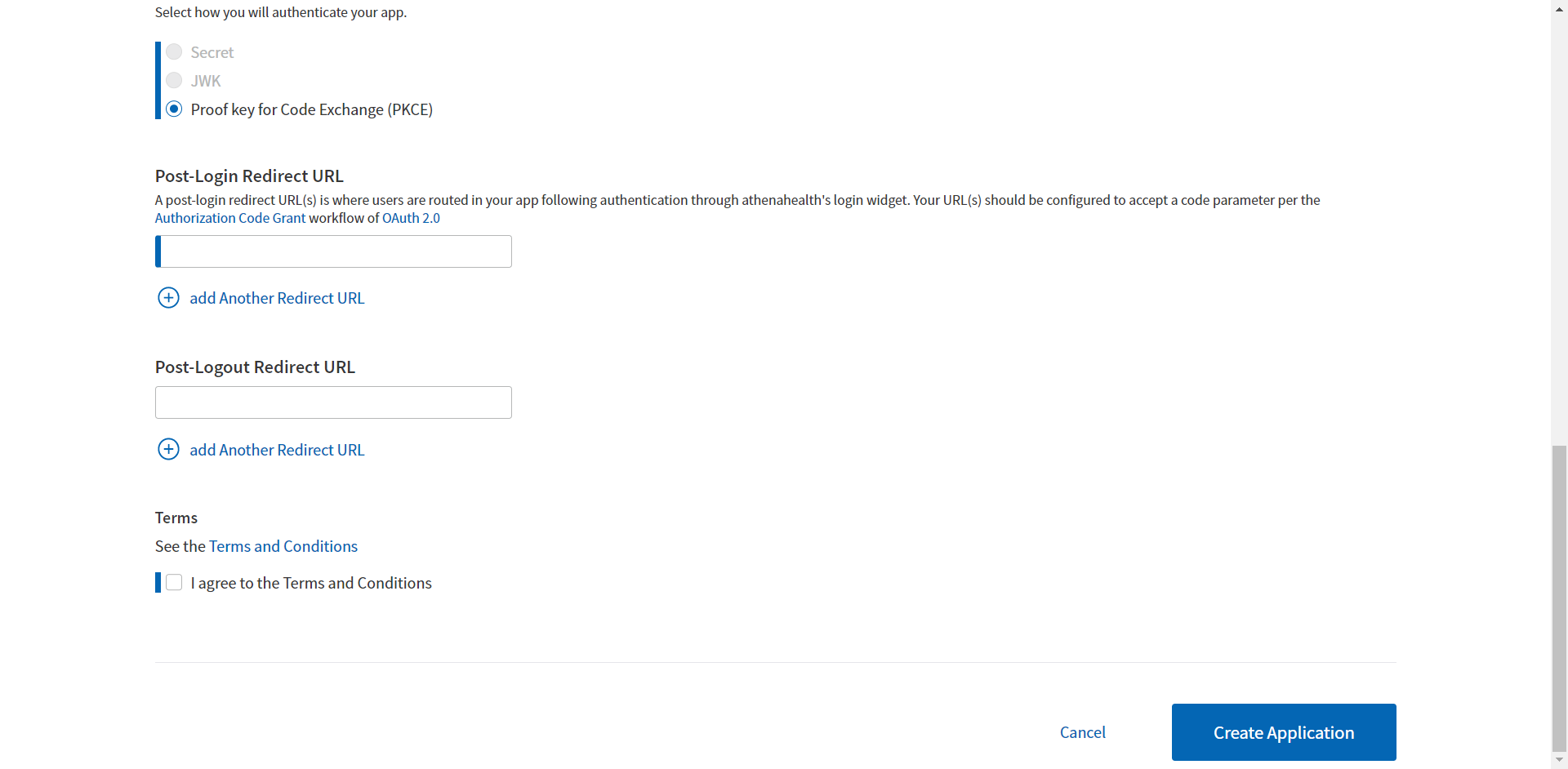
Step 4: View App Analytics
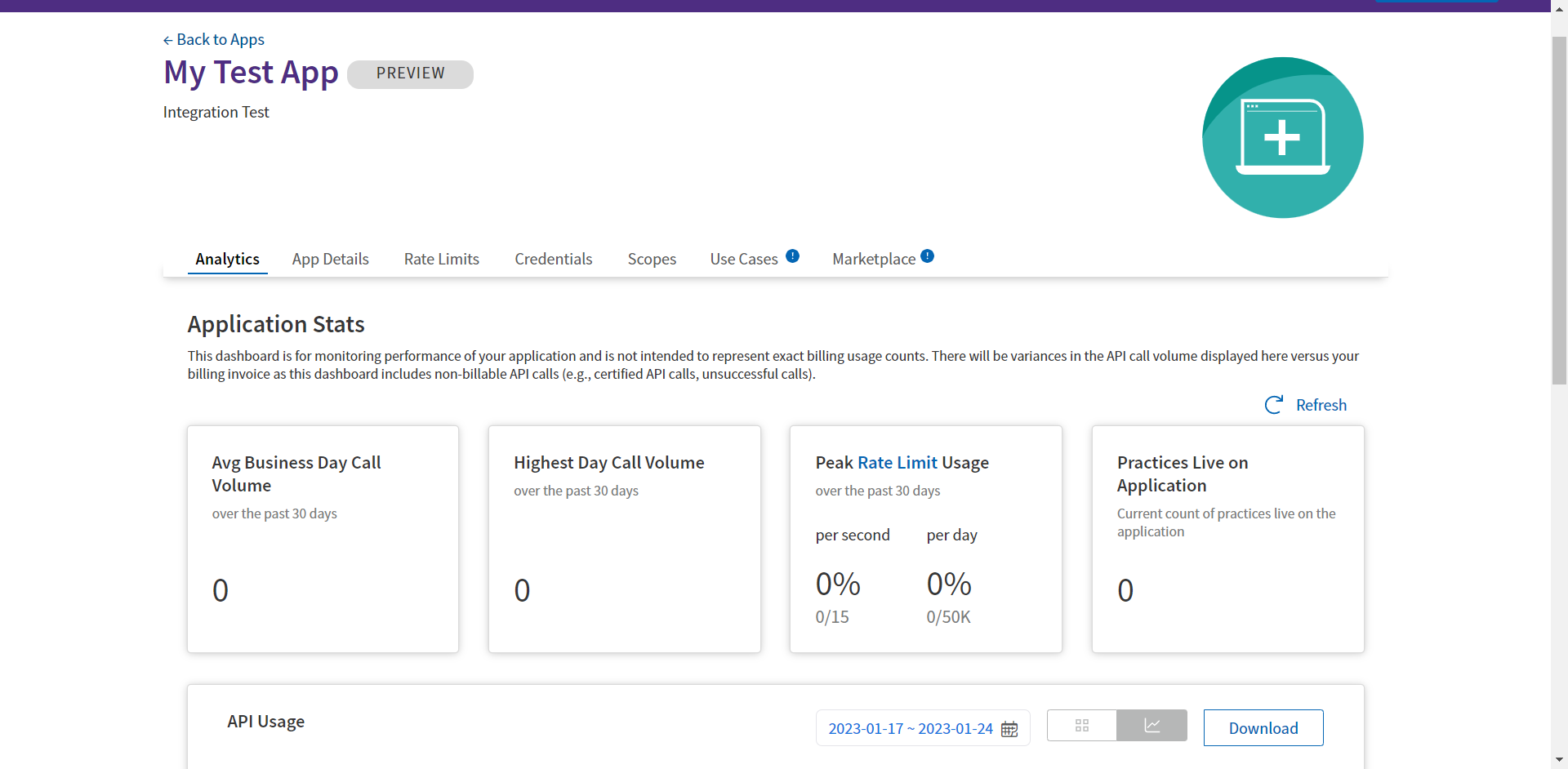
Step 5: View App Details
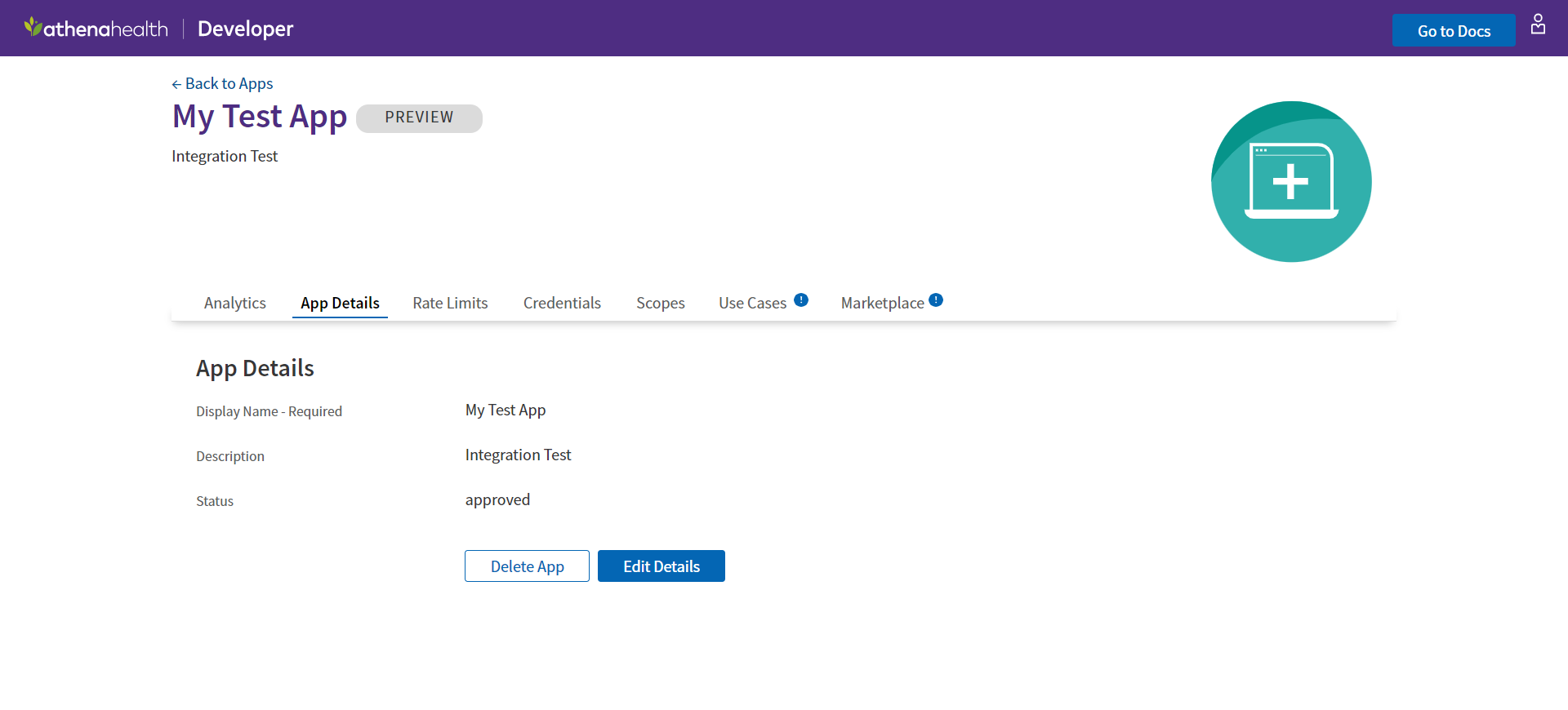
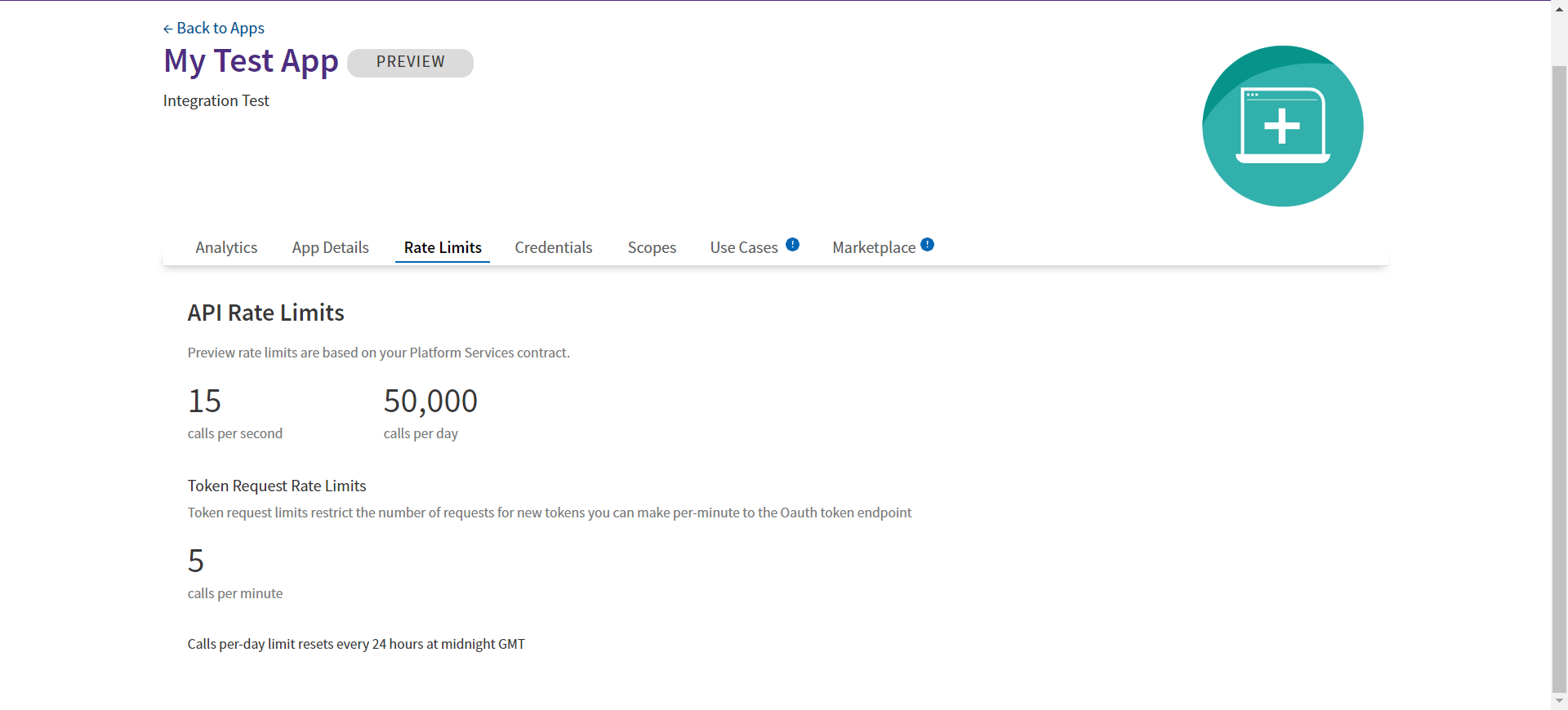
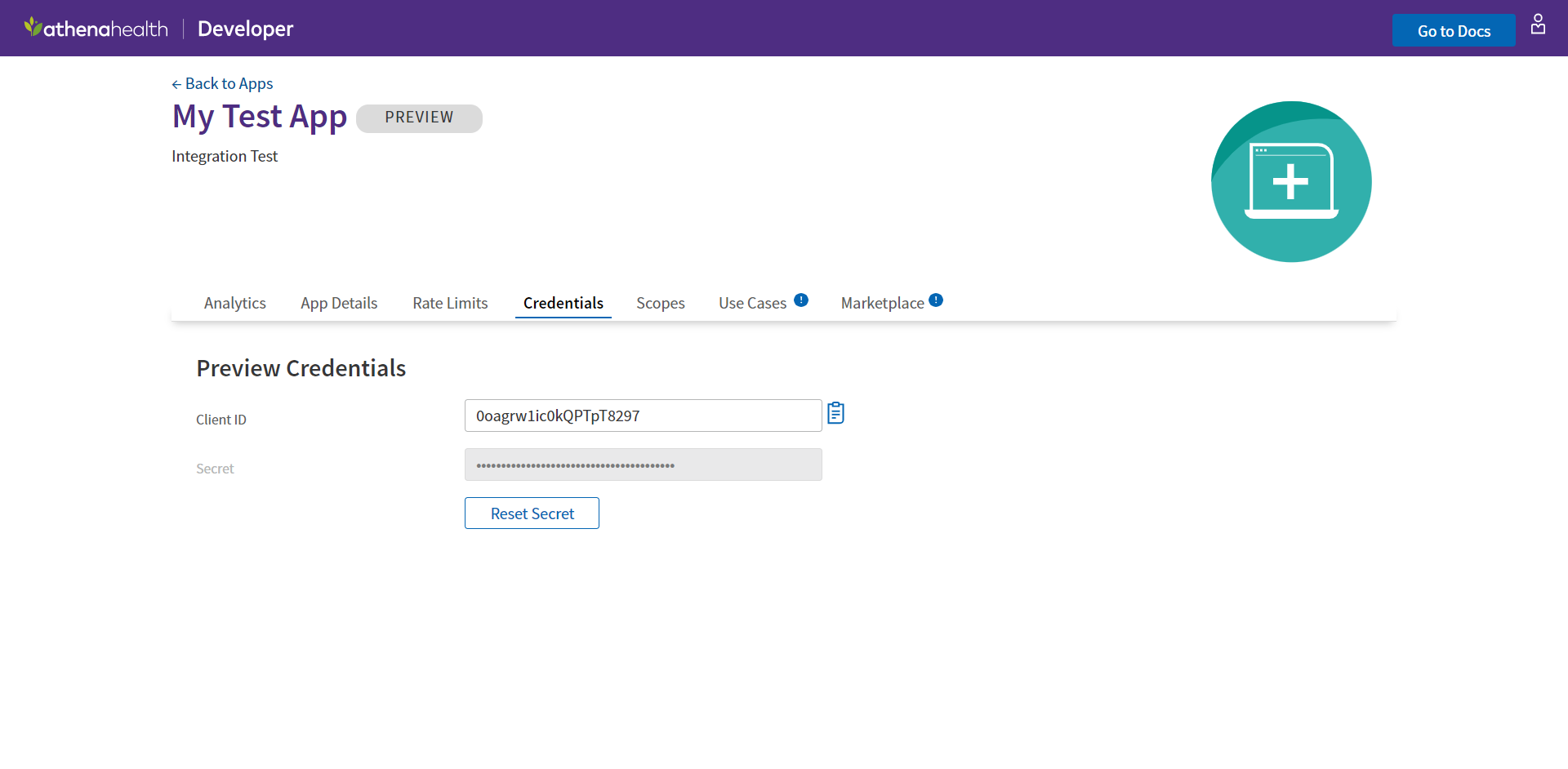
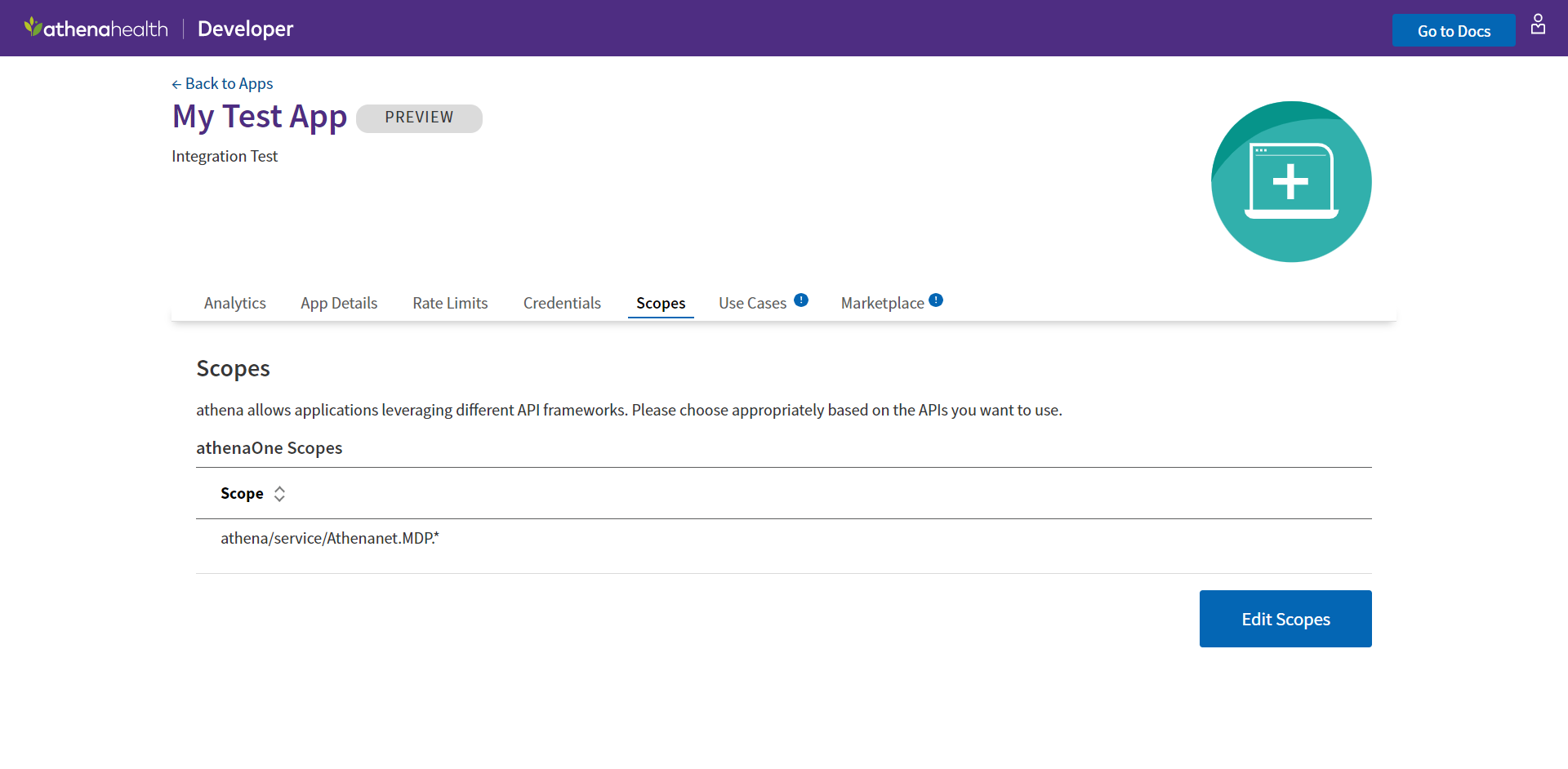
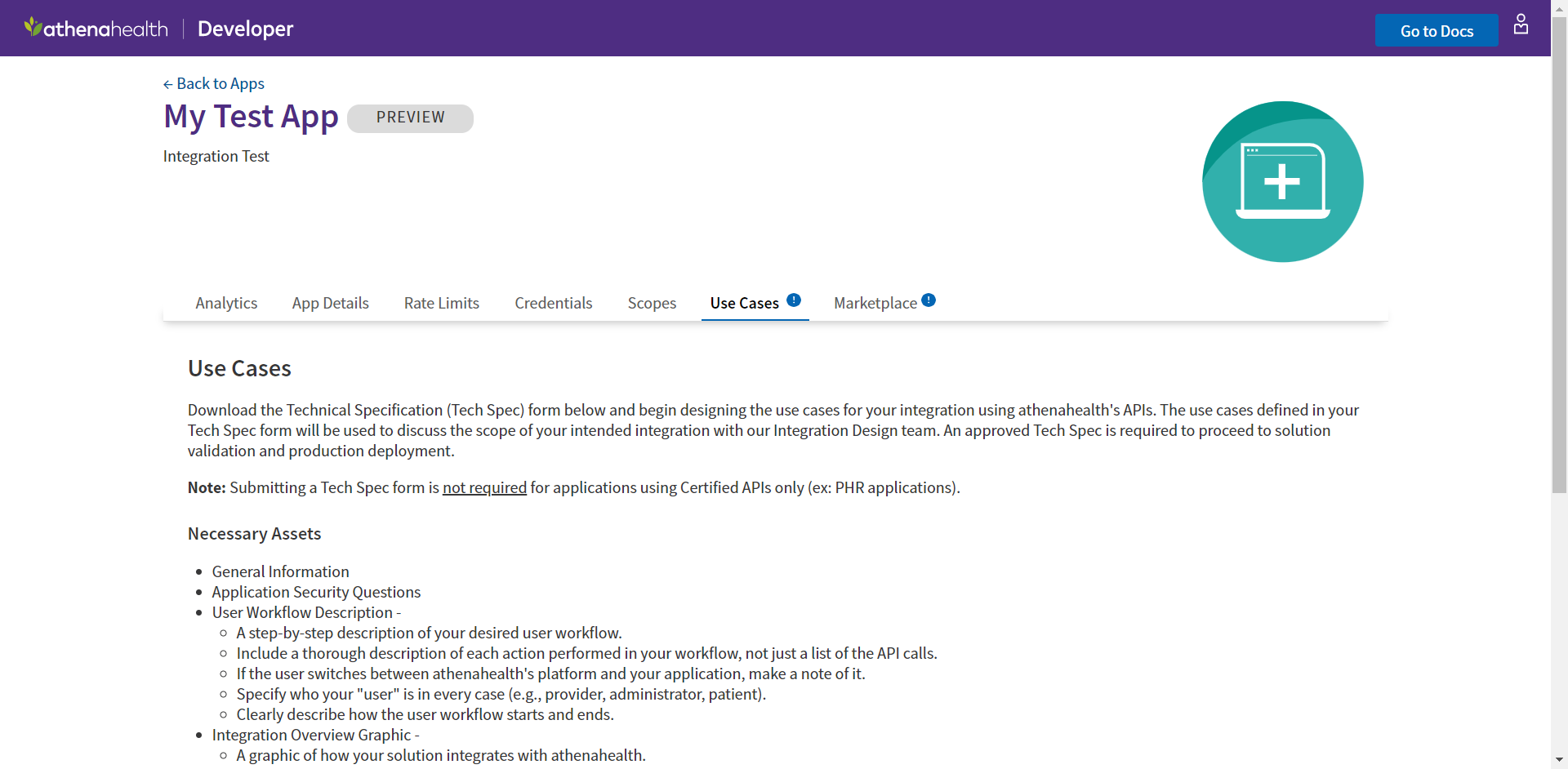
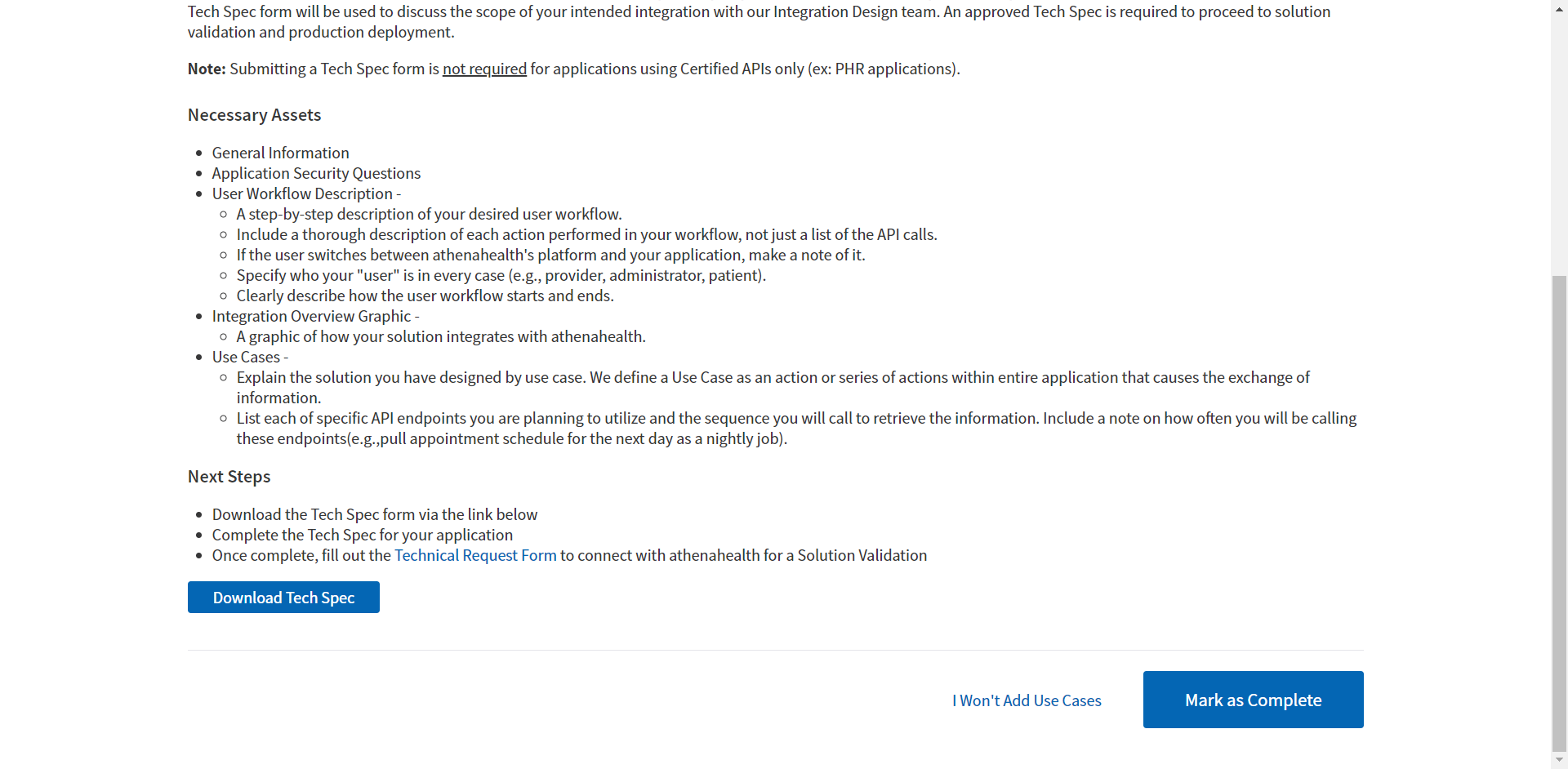
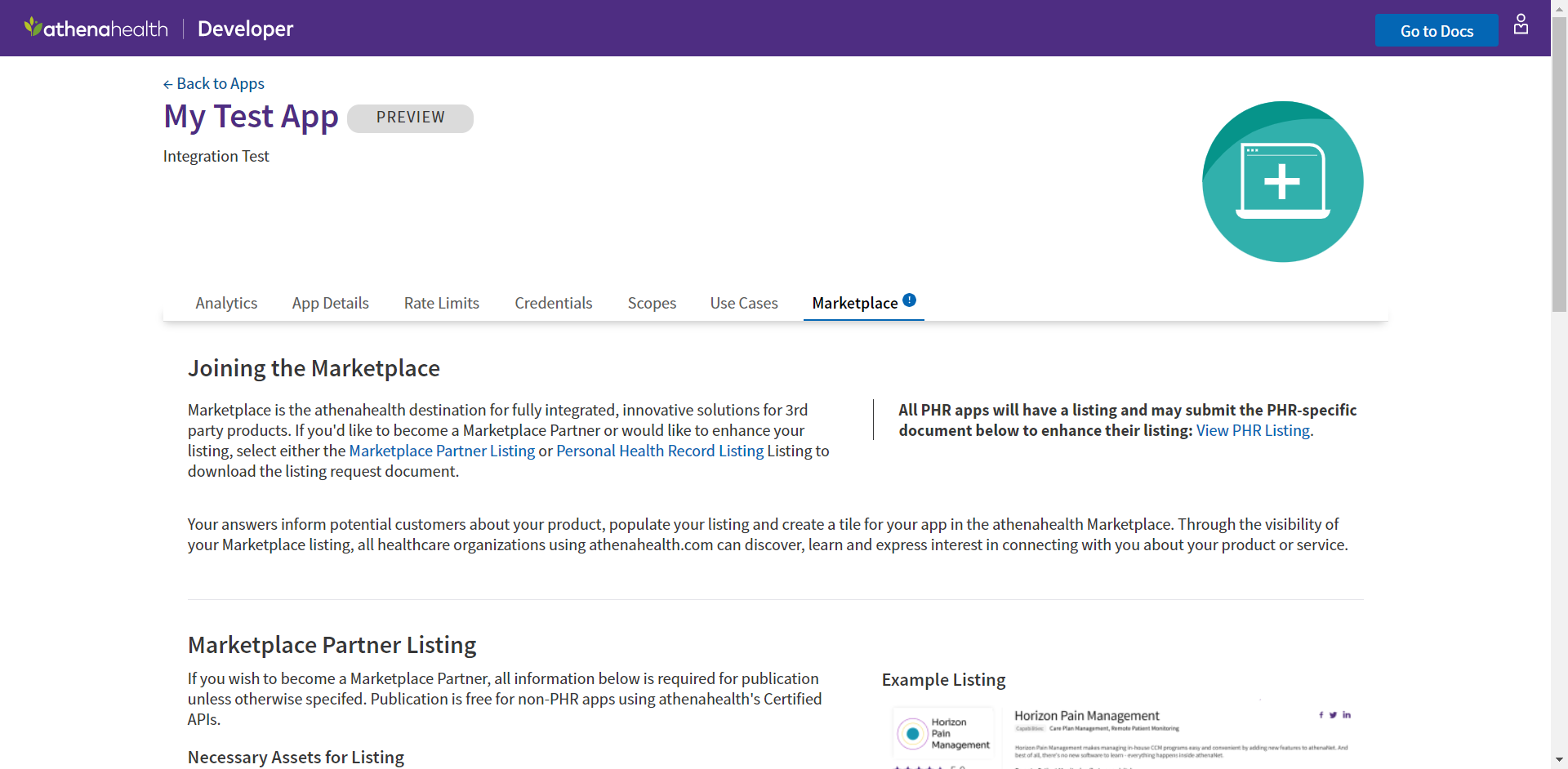
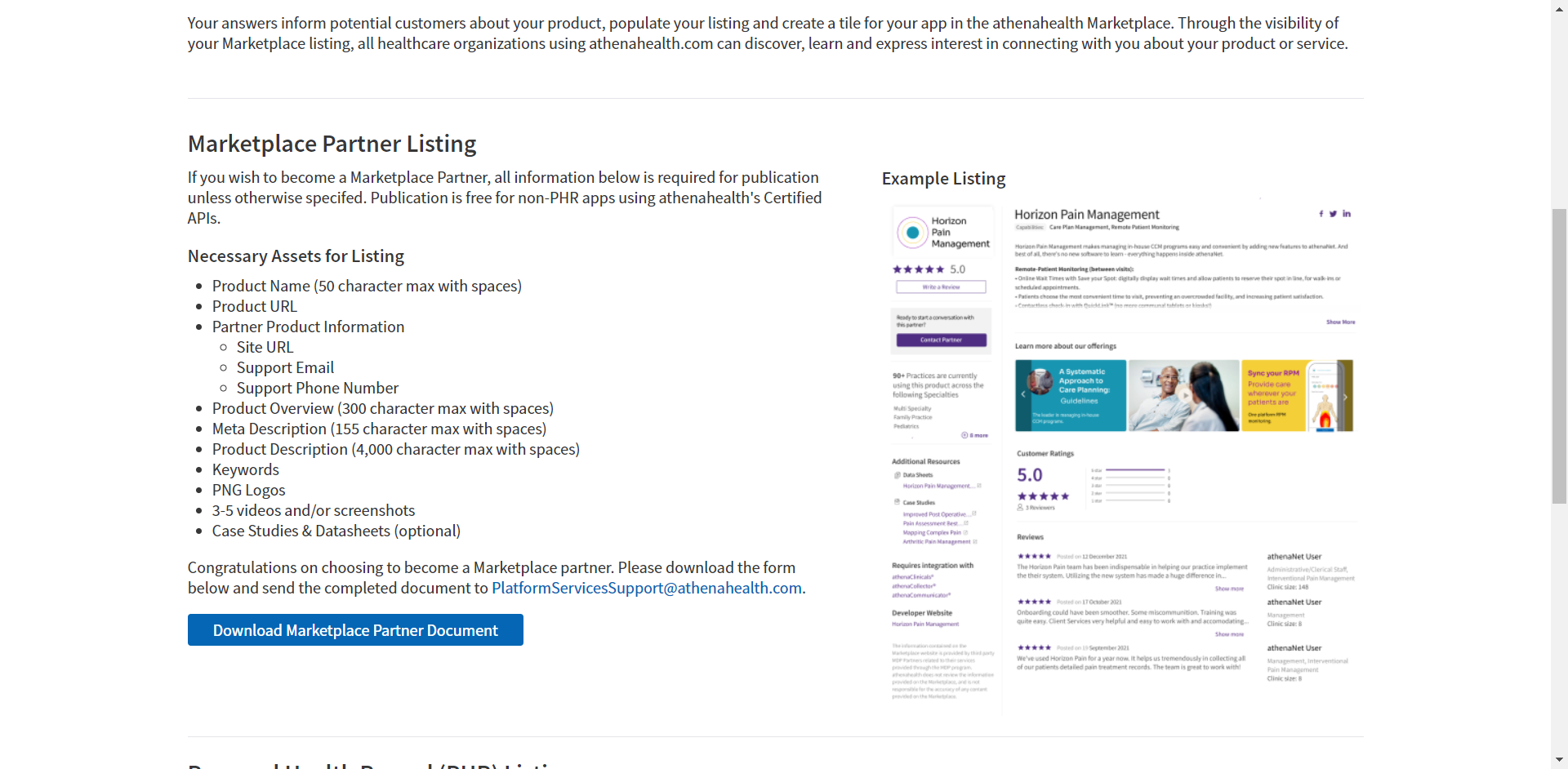
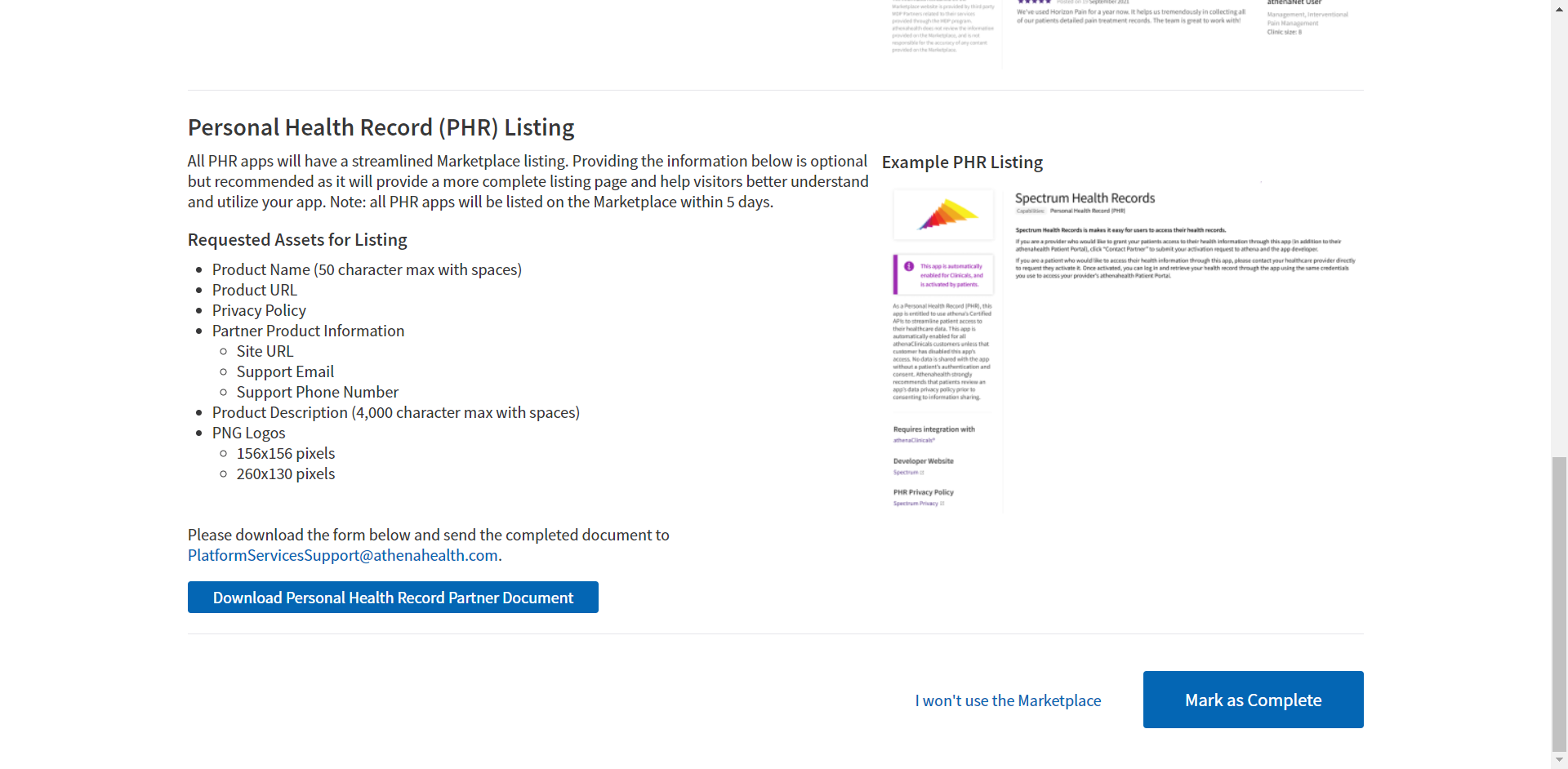
To get your Athena API access & solution approved, you must follow the process Athena shared. The different phases are shown in the diagram above and explained below.
Explore
You Do
- Review Athena workflows and API documentation
- Register for a Developer Console account
- Create a Preview application
- Save your credentials (client-id/key and secret)
- Use your credentials to test API calls in the Sandbox
Contracting
You Do
- Reach out to athenahealth to determine contracting requirements if you're an existing customer or are interested in becoming an athenaOne customer or Marketplace Partner
AthenaHealth Does
- Send a contract for your review and signature.
Design Solution
You Do
- Submit your API Technical Specification form (Tech Spec)
- Review Tech Spec with an athenahealth API consultant
AthenaHealth Does
- Provide Tech Spec
- Help you optimize calls by choosing the best APIs for your use case
- Grant API access to your dedicated Preview environment
Build & Test
You Do
- Develop and test your solution in your Preview environment at your speed
- (As needed) Request API Solution Consulting to advise and guide you on your integration development
- Request Solution Validation once your application is ready to demo
- Review best practices, auth models, and testing recs to ensure your application is compliant
AthenaHealth Does
- (As needed) Provide advice and guidance on your integration development
- Schedule a Solution Validation call with an athenahealth specialist and your business and technical stakeholders
Validate Solution
You Do
- Provide a full, end-to-end demonstration of your solution using your Preview environment
- (As needed) Address outstanding issues and re-request Solution Validation
AthenaHealth Does
- Review finalized API Technical Specification Form
- For successful validations:
- Provide Go-Live Authorization Form for signature
- Provide Production Access for the API Solution
- Delete temporary Preview environment following Production access
- For unsuccessful validations, provide an explanation of outstanding issues that you will need to resolve before re-requesting Solution Validation.
Go Live
You Do
- Update your app with the Production keyset and deploy the app to Production
- If you are developing a Marketplace solution or working on behalf of an athenahealth client, you will also coordinate deployment to Production with the client.
- If deploying your app to multiple athenahealth clients, run your regression test with your client(s) before rolling it out to other clients.
AthenaHealth Does
- Create/enable appropriate Production credentials for Production use.
